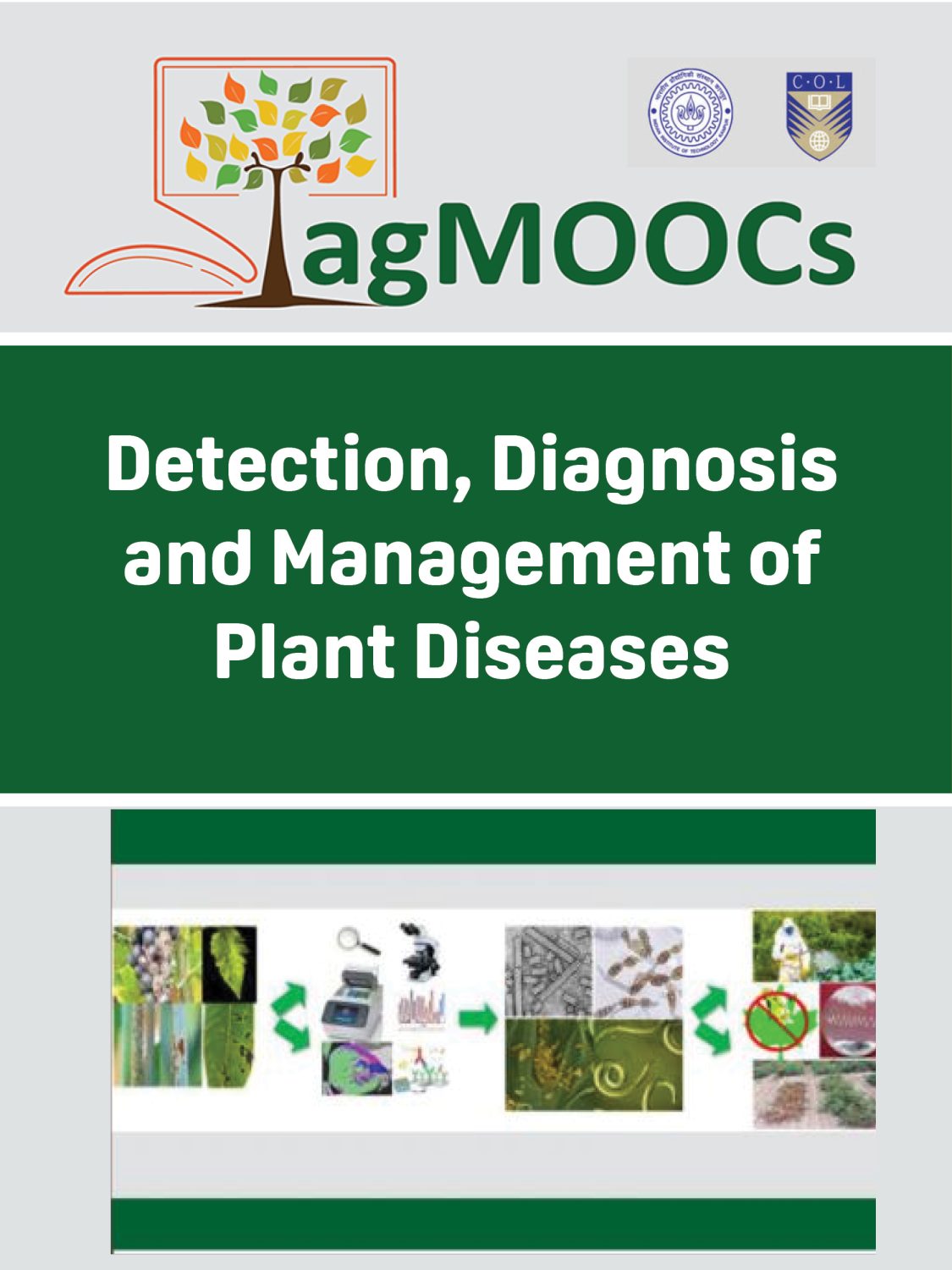Detection, Diagnosis and Management of Plant Diseases

Management of crop diseases caused by various phytopathogens needs proper detection and diagnosis of the causal agents. Adequate crop management strategies could be sorted out only when the actual causal agent is correctly established. The course is designed to discuss the approaches used for plant disease detection and diagnosis. Both conventional, as well as advanced molecular diagnostic techniques currently being used for plant disease diagnosis, will be discussed. Additional emphasis will also be given to discuss the recent advancements in plant disease diagnostics and special applications of diagnostic tools for the diagnosis of specific plant pathogens. Additionally, how plant disease diagnostics can help in the management of plant diseases will also be discussed. In short, the course is designed to present a clear picture of the concepts of disease detection and diagnosis; tools and techniques used for disease detection and diagnosis; special applications of plant disease diagnostic tools; diagnostic challenges; forensics of plants and microbes; and diagnostics in plant disease management.
Contents
Book Information
License
Detection, Diagnosis and Management of Plant Diseases Copyright © by Commonwealth of Learning (COL) is licensed under a Creative Commons Attribution-ShareAlike 4.0 International License, except where otherwise noted.
Subject
Pest control / plant diseases

